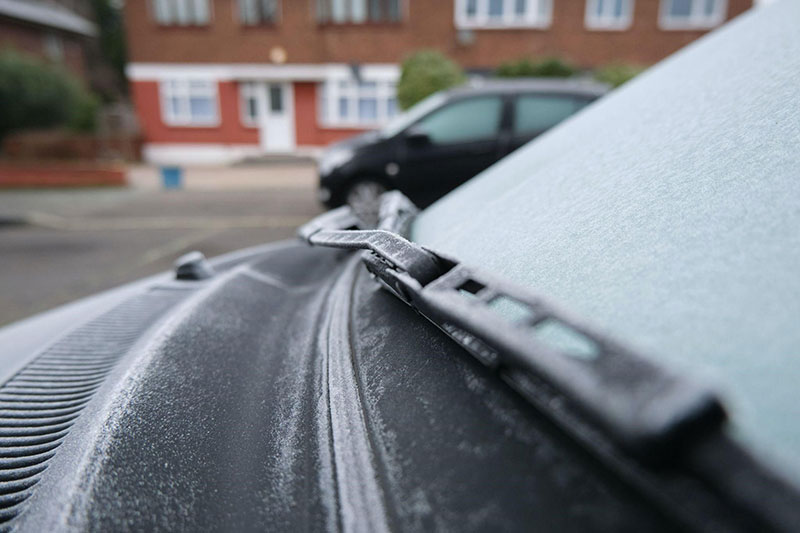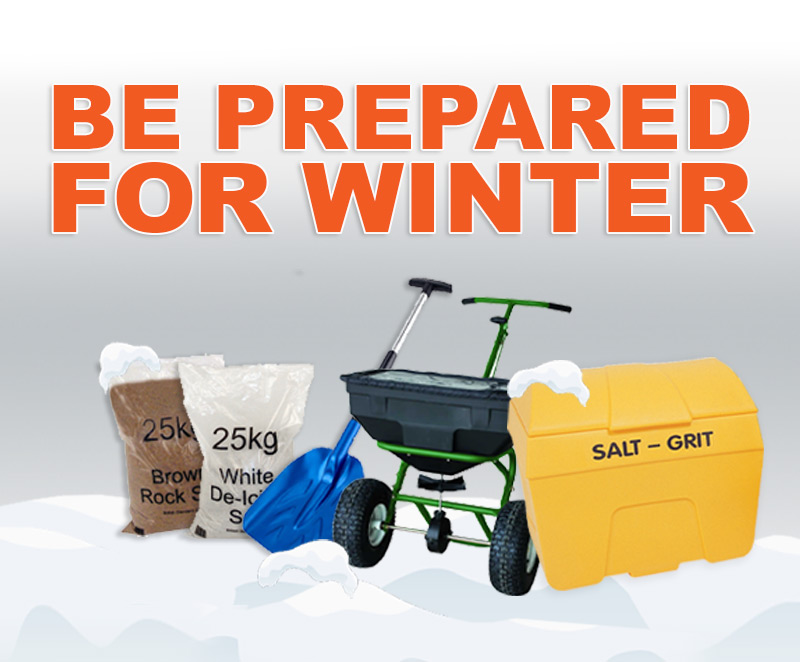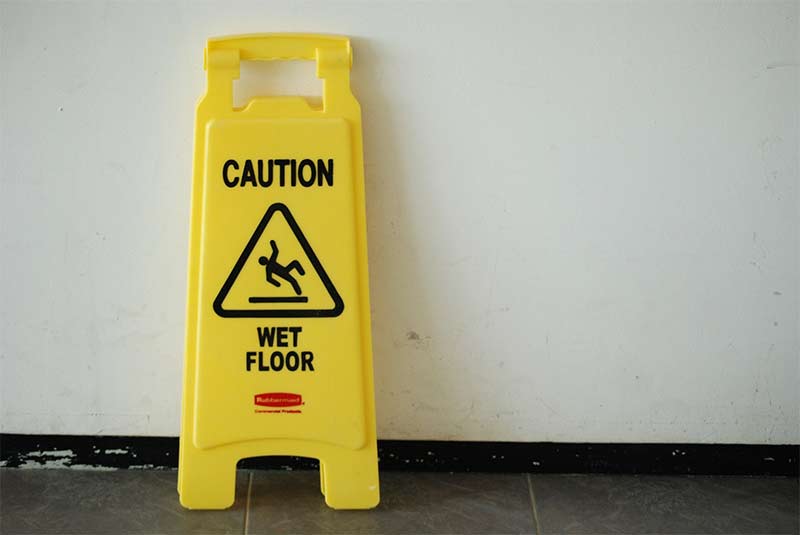As we're fully into autumn - some places have already experienced their first frost - winter is just around the corner. That means frost, snow (there's talk among the weather forecasters that we could see a white Christmas this year!), ice and rain, coupled with fewer daylight hours, can lead to plenty of slips and trips!
Keeping workplace paths and walkways safe, as well as goods entrances and warehouses with heavy traffic, is a must to ensure the safety of your staff and visitors. It's wise to be prepared for when the winter weather hits, so here's our advice on how to maintain your workplace this winter.

Assess the risks
Before you start buying up snow shovels and other cold weather equipment, take some time to assess your workplace for potential risks. Consider visibility around the building, the pathways, entrances and exits, any car parks, truck delivery areas and warehouse floors.

Remember, what falls on the ground outside doesn’t always stay outside. People may enter with wet shoes, depositing water and making reception areas and other floors that are tiled or vinyl-covered particularly slippery. Vehicles can leave behind snow that was trapped in tyre treads around warehouse entrances and distribution areas.
The more you can assess the risks and identify potential hazards, the lower the likelihood of accidents happening.
Make sure visibility is good
With fewer daylight hours and darker days, visibility drops during the winter. On some days, heavy rainfall or thick fog can reduce visibility significantly.
If you have staff that wear high visibility workwear, make sure it is appropriate for the weather in winter, such as thicker high visibility jackets. Provide clothes that are waterproof and warm to protect them from the elements, particularly if they are working in areas that are prone to draughts, like warehouses. Don't forget to think about footwear too.
Slips and trips
Slips and trips in the workplace are a common cause of injuries. This is exacerbated during winter due to the cold, rain, ice, snow and even fallen leaves. This should be a major concern for business owners because if a workplace accident happens and you haven’t implemented the necessary safe working practices, you could be held accountable.

Let's look at the most common cold weather hazards you need to consider:
- Autumn leaves on the ground - wet and decaying leaves are extremely slippery, particularly if they are left to build up. In addition, a layer of leaves on the ground could hide a problem underneath, such as a raised paving slab, uneven ground or a hole. Ensure any areas that accumulate with leaves are cleared away regularly using a leaf rake or leaf blower during the autumn months.
- Excessive rain - in fact, any amount of rain can create a hazard. It can turn some surfaces into a slippery zone, particularly if there is heavy traffic across the wet surface. Consider fitting canopies over entrances and exits of buildings or warehouses. Encourage people to avoid walking on grassy or muddy areas - adding extra mud and dirt to an already wet area will only make it more slippery. In areas where there is a higher risk of wet floors, fit slip-resistant flooring or mats to help avoid any accidents.
- Ice and frost - in extreme winter conditions, wet surfaces will turn icy and increase the risk of slipping; not just for pedestrians either! Icy car parks and delivery areas can also cause a major problem for vehicles too. As well as making sure sufficient 'caution snow and ice' signage is put out alerting people to icy conditions, consider diverting pedestrians to safer routes, cordoning off areas that are unsafe due to ice, and putting down de-icing salt. Winter Wizard white de-icing salt is highly effective and works ten times faster than conventional rock salt. In addition, it prevents the area from re-freezing for up to 24 hours, ensuring all paths and access routes are as safe as possible during icy winter conditions. If you have large icy areas to cover, such as pedestrian car parks or multiple warehouse delivery areas, use a towable broadcast salt spreader to make the job of spreading de-icing salt much quicker. It also has a handy rain cover with a strong tubular steel frame, pneumatic tyres, and a polypropylene dispensing hopper.
- Snow - if there's one type of winter weather that can cause the greatest level of havoc, it's snow. Any cold weather safety strategy has to include a plan to ensure your business continues to operate in snow conditions. It's important to make sure access areas and pedestrian paths are clear of snow and snow shovels are an ideal way to do this. If you have a forklift and a large area to clear of snow, consider a snow plough forklift attachment to make the job easy. But the added headache is keeping the snow-cleared area safe from freezing.

Maintaining your workplace this winter not only ensures your business production levels don't suffer, but it also protects the safety of your staff. Failing to be prepared could cause accidents, which may result in your business facing the risk of being held responsible for unsafe working conditions. As well as adhering to manual handling safety measures as part of the Workplace (Health, Safety and Welfare) Regulations 1992, the prevention of accident-related injuries from slips and falls is also a consideration.
There are a wide range of products to ensure your business premises are winter-safe. Vehicle snow socks and flexible PVC vehicle traction tracks provide the ideal solution should your car get stuck or caught out by overnight snowfall. Mobile grit dispensing bins are a great solution to help to get you moving. As well as de-icing salts and salt spreaders, there are also a wide variety of different snow shovels and snow ploughs at your disposal.
Stock up on your winter maintenance essentials at ESE Direct. We are proud to be a leading supplier of industrial and commercial products, and our experienced team is on hand to help with any query.